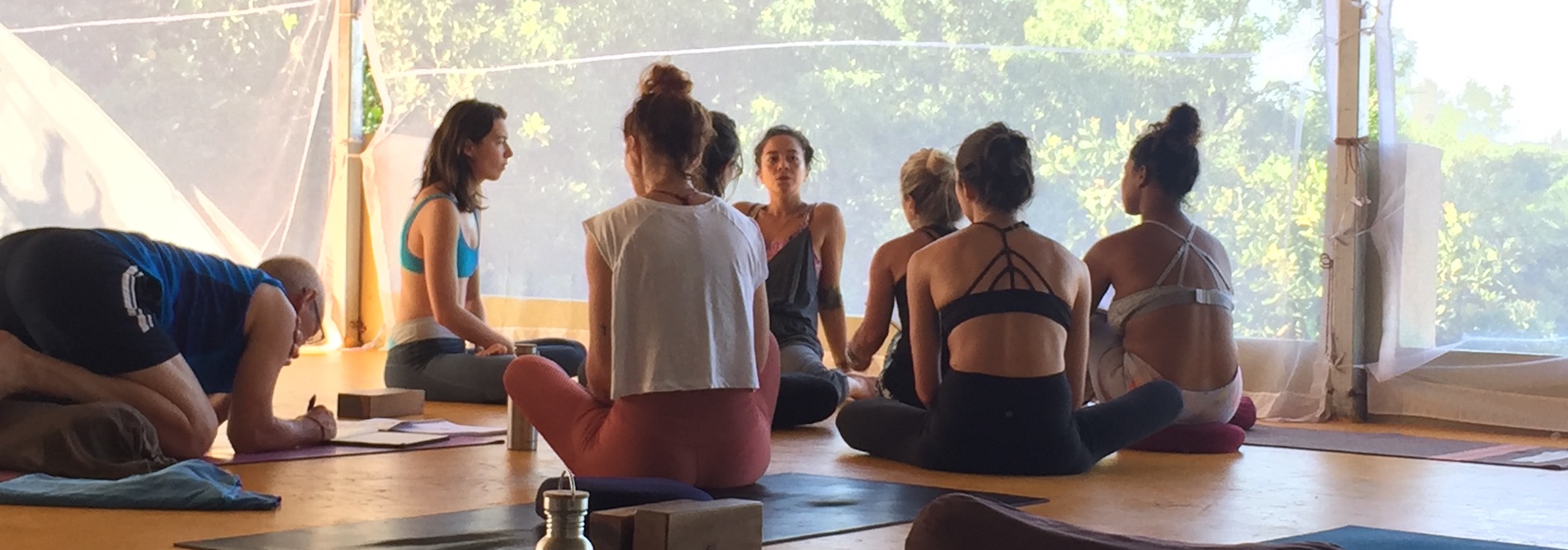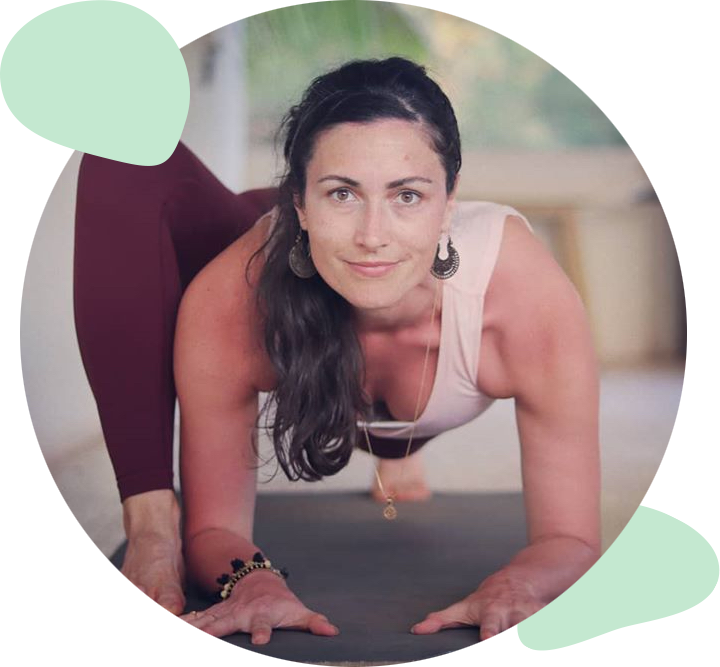YTT: week 1
It’s the end of the first week of my 200h Ashtanga Vinyasa yoga teacher training and it’s been quite an intense one. Three mornings this week we’ve had a 2h ashtanga practice led by our ashtanga teacher Martin Sittek, from 6:30am to 8:30am, and let me tell you that this is hard. Ashtanga itself is quite a strong and difficult practice but if you add the early morning start, the temperature, the mosquitoes, the fatigue from our dense schedule, this takes that morning practice to a whole new level of brutality. But, hey, we’re here to learn and it wouldn’t be fun if it wasn’t challenging, right? The other 3 mornings we enjoy a vinyasa practice, which at first I found really soft, maybe too soft, but eventually I got to enjoy it, especially when it’s the first thing you do in the morning. Each physical morning practice is followed by a pranayama and meditation practice where we learn about the different pranayama (breathing) techniques, what they do to your body and how to perform them. To be honest, I think meditation classes are the most challenging ones for me - I just can’t stay still.
I’m not an ashtangi. I think I may have attended 5 ashtanga classes in my yoga journey so far and they’ve always been the ones I liked the least. Because it doesn’t flow like vinyasa, because it’s always the same set of postures. And although I understand why some people like a routine, something you don’t even have to think about once you know the sequence, I personally like the freedom of vinyasa, and working on transitions between postures. Having said that, in a week time I’ve learned to appreciate ashtanga way more than I used to, as this practice has some juicy challenges I’m gonna love working on (like, jump back/jump through). Ashtanga is also really precise on alignment, and we spend 2h every day breaking down the exact positioning of the body in each posture of the primary serie. Being a very analytical person, I thrive on understanding the why before learning the how, which is exactly what these classes are for. In those classes we also learn how to adjust postures, which is the bit I never dared doing before being taught, as misaligning someone could result in an injury. The adjustment teaching is very fun but I also find it challenging as it’s difficult to gauge how much strength to put in your motion, and it also varies a lot depending on who you’re adjusting; you won’t adjust a beginner and an advanced practitioner the same way.
In addition to the physical practice, we have anatomy classes, philosophy classes and teaching classes. And I can’t decide which one is my favourite! I’ve learned so much in the anatomy class already - which is a double challenge for me as I don’t know English names for bones and muscles. It’s so important to understand the structure and function of one’s body in order to correctly position or modify postures in case of injuries. It also brings a deeper awareness of your own body - my yoga practice already helped me listen to it and pay attention to how it feels, now I can understand a bit more precisely what is happening inside and the reason why I feel like this. Our teacher Maria - who is also our teaching teacher and vinyasa teacher - has done an amazing job at making this complex system understandable and accessible to us.
The philosophy classes are taught by Sudhir, the director of Sampoorna yoga. Sudhir has studied yoga philosophy for years - he even was a monk for a while and lived in a monastery. His knowledge is both broad and deep and listening to him lecturing us is always very inspiring. As he likes to say, he wants us to leave the class more confused than we were when we entered. Philosophy classes cover the history of yoga sutras, from the Vedas to the modern form of Hatha/Ashtanga. It’s very interesting and it gives a meaning to a lot of rituals I knew existed but I didn’t actually practiced because I didn’t know what they meant.
Finally, the teaching classes. Apparently not all yoga teacher trainings have teaching classes, but for me who’s never taught any yoga or fitness (quite a few students here are already PT so they know how to teach a class), I find them very useful. So far we’ve covered how to speak up publicly, how to sequence a class, with a peak posture and a flow preparing your body for it, as well as another flow to integrate the posture afterward. We’ve learned different ways to cue, using either anatomical names or metaphors.
As you can see, the week has been dense. We may not practice more than usual (I used to practice every day, or at least have some type of physical activity every day) but this isn’t the point of this training. We’re here to learn how to teach more than to practice. The amount of information we have to remember is huge. Just learning the sanskrit names of all the postures in the primary serie of ashtanga is a difficult exercise! We only have a day a a half off per week, and so far I’ve spent more than half of it doing my homework. I’m not complaining though - I love learning new things every day and the kind atmosphere in the group really helps making this experience super fun and fulfilling.
Comments
Leave a comment.Fields marked with a * are compulsory. Your email won't be published.

 By Cyrièle
By Cyrièle 